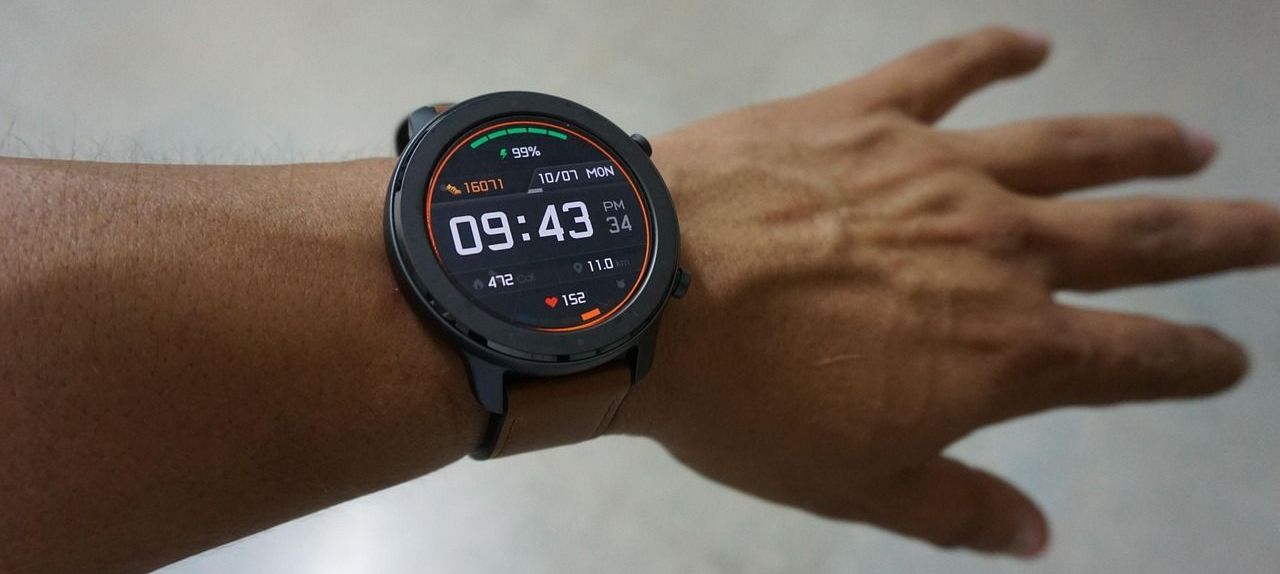The Hidden Risks of Health Tech Wearables: What You Need to Know

About the Author
Ron B is a globally recognized expert in personal and professional development, holding multiple advanced certifications, including:
- Master Practitioner of NLP (MNLP): Expert in Neuro-Linguistic Programming, helping individuals rewire their thought patterns for success.
- Master NLP Coach (Executive & Life): Skilled in coaching executives and individuals to reach their full potential.
- Master Practitioner of Timeline Therapy™ (MTLT): Specializing in releasing negative emotions and limiting beliefs to foster a more empowered future.
- Board Designated Hypnosis Trainer (TCHt): Authority in utilizing hypnosis for transformation and behavioral change.
- Certified Value Builder: Proficient in enhancing business value and driving entrepreneurial success.
- International Tax Specialist: Knowledgeable in global tax strategies and financial planning.
With a deep passion for guiding people towards greater health and wealth, Ron B has dedicated their career to being a catalyst for change. They advocate for a shift from our current reactive sick care system to one of proactive care, empowering individuals to take charge of their well-being and financial future.
Through this blog, Ron B aims to share insights, strategies, and inspiration, helping entrepreneurs lead energized and lengthy lives that are fulfilling.
Health tech wearables have transformed the way we monitor our well-being. From smartwatches to fitness trackers and even smart rings, these devices offer real-time insights into heart rate, sleep patterns, physical activity, and more. They promise convenience, motivation, and a data-driven approach to health—but are they as safe and reliable as they seem?
While wearables can be powerful tools, they also come with hidden risks that many users overlook. From privacy concerns to accuracy issues, relying too much on these gadgets could do more harm than good. Let’s take a closer look at some of the most pressing concerns and what you can do to protect yourself.
1. Data Privacy and Security Risks: Who’s Watching Your Health Data?
One of the biggest concerns with health wearables isn’t just the cool features—it’s where all that personal health data goes. These smart gadgets sync with apps and cloud services, making them convenient but also potential goldmines for hackers and data brokers. Imagine your heart rate data being used to predict insurance rates or your sleep patterns fuelling targeted ads. Yikes!
But wait—shouldn’t there be laws protecting this sensitive info? Yes! Regulations like PHIPPA (Personal Health Information Protection Act) exist to safeguard health data, but here’s the twist: Many wearable tech companies don’t classify their data as "personal health information" in the same way hospitals or clinics do. This raises the question—how closely are these devices really scrutinized for compliance?
How to Protect Yourself:
✅
Check the fine print – Read privacy policies (yes, really!) to see how your data is used.
✅
Lock it down – Use strong passwords, two-factor authentication, and limit data sharing.
✅ Ask the tough questions – Before buying, check if the company follows privacy laws like PHIPPA or HIPAA.
At the end of the day, your health data is yours—make sure it stays that way!
2. Accuracy and Reliability: Can You Trust the Numbers?
Health wearables promise to track everything from your calorie burn to your sleep cycles, but here’s the catch—they’re not always spot-on. Studies have shown that some fitness trackers and smartwatches miscalculate key metrics like heart rate, steps, and even oxygen levels. Imagine thinking you burned 500 calories when it was really 300—hello, accidental overeating! Or worse, trusting a device that says your heart rate is fine when it’s actually signaling a problem.
At the end of the day, these gadgets are great for trends, not for diagnoses. So, how can you make sure you’re getting the best out of them without putting too much faith in their numbers?
How to Play It Smart:
✅
Think of wearables as health sidekicks, not doctors – Use them for motivation, not medical decisions.
✅
Double-check with the pros – If something feels off, consult a healthcare provider instead of relying on your watch.
✅ Go for the real deal – When possible, choose clinically validated or regulatory-approved devices for better accuracy.
Remember, wearables are here to support your health journey, not run the show. Keep the data in perspective, and you’ll stay on the right track!
3. Over-Reliance and Anxiety: When Tracking Becomes Stressing
Health wearables are meant to empower you, not overwhelm you. But for some, constantly checking stats can turn into an obsession. Did I hit my step goal? Why is my heart rate a little higher today? Am I sleeping "wrong"? Before you know it, you’re spiraling into a stress cycle, and what was supposed to help your well-being is now hijacking your peace of mind.
Worse, wearables can feed the dreaded "Dr. Google effect"—where a small fluctuation in biometrics leads to frantic internet searches and self-diagnoses that convince you the worst is happening. (Spoiler alert: It probably isn’t.)
How to Keep It Chill:
✅
Set it and forget it – Track your progress, but don’t live by the numbers. Your body isn’t a machine!
✅
Expect fluctuations – Heart rate, sleep, and activity levels naturally vary. That’s normal, not alarming.
✅ Consult real experts, not the internet – If something truly feels off, a doctor beats Dr. Google every time.
Remember, your well-being is more than just data. Let wearables enhance your health journey, not control it!
4. Battery Life & Radiation: Should You Be Concerned?
We love our health tech wearables, but let’s be real—they’re basically tiny computers strapped to our bodies, constantly buzzing with Bluetooth and wireless signals. While there’s no solid proof that these devices cause harm, some people report odd side effects. Take my associate, for example—after wearing her health-tracking watch daily, she started experiencing severe wrist pain. The moment she ditched the watch, the pain disappeared. Coincidence? Maybe. But she’s not strapping it back on anytime soon!
Then there’s the battery issue—wearables need frequent charging, and faulty batteries can overheat or, in rare cases, pose a fire hazard (because no one signed up for "spontaneous wrist combustion").
How to Stay Safe & Smart:
✅
Give your wrist a break – Take off your device now and then, especially at night. Your skin (and nerves) will thank you.
✅
Charge with care – Follow the manufacturer’s guidelines and avoid overcharging to prevent battery mishaps.
✅
Stay in the know – Keep an eye on new research about wearable radiation exposure (just don’t fall down a conspiracy theory rabbit hole!).
Bottom line? Wearables are convenient, but they shouldn’t be glued to you 24/7. A little tech-free time might be a good thing!
5. Limited Medical Integration: Great Data, But Who’s Using It?
Your smartwatch might know your resting heart rate better than you do, but here’s the catch—most doctors don’t trust wearable data (yet). While these devices track tons of health metrics, many hospitals and healthcare providers don’t consider them medically reliable. So, if you walk into your doctor’s office waving your sleep score and heart rate trends, don’t be surprised if they nod politely but stick to their own tests.
That said, change is coming. As AI-powered healthcare evolves, wearables will likely play a bigger role in clinical settings. In fact, tele-homecare and distance-care programs are already exploring how wearable data can improve remote patient monitoring. For those managing chronic conditions, living in rural settings, or recovering from illness, these devices could help doctors keep an eye on patients without requiring them to be in a hospital bed. This could be especially valuable in areas where access to healthcare is limited due to distance or provider shortages.
How to Make the Most of It:
✅
Talk to your doctor – Ask how wearable data can complement your medical care. Some providers may find certain trends useful!
✅
Keep expectations realistic – Wearables are great for tracking, but they’re not diagnostic tools (yet).
✅ Stay open to the future – As AI and telemedicine evolve, your health tracker might just become your lifeline to remote healthcare.
Until then, wearables are great for personal insights, but when it comes to serious health matters, the experts still have the final say.
Final Thoughts
Health tech wearables bring a world of benefits—from tracking daily activity to spotting potential health concerns early. As someone who believes in being proactive and taking charge of your well-being, I fully support using these tools to stay informed and engaged in your health journey.
That said, balance is key.
While wearables can offer valuable insights, they’re not infallible. Staying mindful of privacy risks, accuracy concerns, and the temptation to over-rely on data ensures that these devices work for you—not the other way around.
By taking a thoughtful approach—using wearables as a helpful tool rather than the ultimate authority—you can make them a powerful ally in your health strategy, rather than a source of stress or risk.
So go ahead—track, monitor, and optimize—but always remember: you, not your device, are the true CEO of your health. 💡💙
🚆 All Aboard the Longevity Train! 🚆
Are you using a health tech wearable?
How has it helped (or frustrated) you?
I’d love to hear your experiences! Share your thoughts in the comments and let’s navigate the future of health tech together.
Stay informed, stay proactive, and stay in control of your well-being—because your health journey is yours to lead! 💙💡
My role is to ensure you stay proactive with it –
let’s get to know each other.
Get your FREE Guide to Graceful Aging - 6 Tips To Avoid Red Face Moments, by clicking on the button below.







Energized Aging For Entrepreneurs




